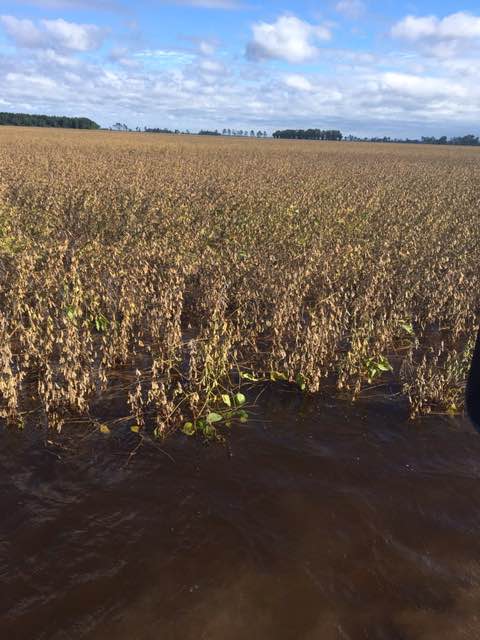We will post information on USDA Farm Service Agency, USDA Risk Management Agency, USDA Rural Development, USDA NRCS and other agencies and programs offering disaster assistance to farmers.
Hurricane Matthew made a greater than anticipated impact on central and coastal North Carolina and with rivers and streams continuing to rise as floodwaters drain to the coast, the threat to crops and livestock may increase in the coming days.
The Federal Emergency Management Agency (FEMA) announced that federal disaster assistance has been made available to the state of North Carolina in the area affected by Hurricane Matthew beginning October 4, 2016.
The action makes federal funding available to affected individuals in Beaufort, Bladen, Columbus, Cumberland, Edgecombe, Hoke, Lenoir, Nash, Pitt, and Robeson counties. Assistance can include grants for temporary housing and home repairs, low-cost loans to cover uninsured property losses, and other programs to help individuals and business owners recover from the effects of the disaster.
Disaster survivors in these counties are encouraged to register for federal disaster assistance with the Federal Emergency Management Agency (FEMA). Individuals, including homeowners, renters, and business owners, in the above designated counties who suffered loss or damages due to Hurricane Matthew may register for assistance online at www.DisasterAssistance.gov, by downloading the FEMA mobile app, or by calling 1-800-621-FEMA (3362).
Federal funding is also available to state and eligible local governments and certain private nonprofit organizations on a cost-sharing basis for emergency work in Beaufort, Bertie, Bladen, Brunswick, Camden, Carteret, Chowan, Columbus, Craven, Cumberland, Currituck, Dare, Duplin, Edgecombe, Greene, Hoke, Hyde, Johnston, Lenoir, Nash, New Hanover, Onslow, Pamlico, Pasquotank, Pender, Perquimans, Pitt, Robeson, Tyrrell, Washington, and Wayne counties.
USDA programs are administered by FSA, NRCS and Rural Development and  typically include low interest loans to help with production and physical losses, assistance with highly eroded land, clearing streams, ditches and farm properties, and assistance for non-insurable crops. USDA encourages farmers and ranchers to contact their local FSA office to learn what documents can help the local office expedite assistance, such as farm records, receipts and pictures of damages or losses.
typically include low interest loans to help with production and physical losses, assistance with highly eroded land, clearing streams, ditches and farm properties, and assistance for non-insurable crops. USDA encourages farmers and ranchers to contact their local FSA office to learn what documents can help the local office expedite assistance, such as farm records, receipts and pictures of damages or losses.
According to USDA, producers with coverage through the RMA administered federal crop insurance program should contact their crop insurance agent. Those who purchased crop insurance will be paid for covered losses. Producers should report crop damage within 72 hours of damage discovery and follow up in writing within 15 days.







